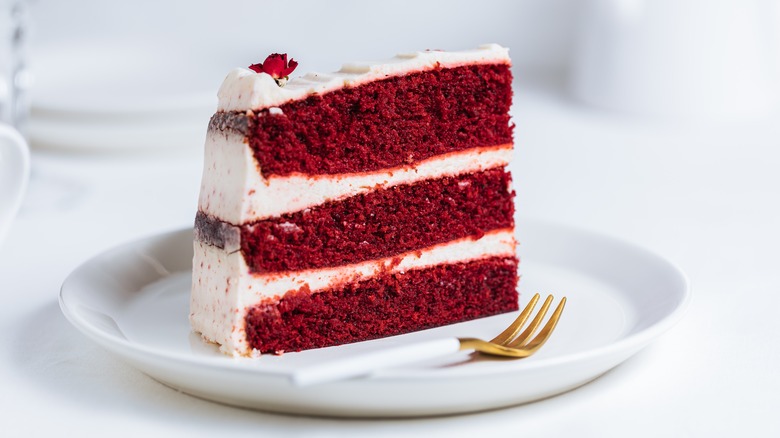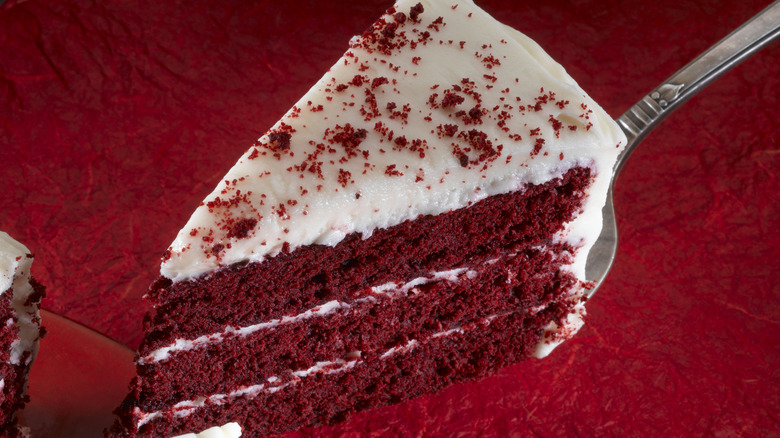The Biggest Mistake You're Making With Red Velvet Cake
We often associate red velvet cake with the holidays (or the backside of an armadillo, thanks to the red velvet groom's cake featured in "Steel Magnolias." Remember that grey icing?). While it's been a Southern confection for decades, it wasn't until the early 2000s that its popularity soared in the rest of the country. Today, red velvet desserts are found in every bakery, not just for Christmas and Valentine's Day.
Some bakers struggle to perfect this stunning cake, made with cocoa powder and dyed red. Food Republic spoke with baking expert Sarah Fennel, the content creator and baker for Broma Bakery, about the most significant mistakes people make with red velvet cake.
According to Fennel, overbaking is the primary issue home bakers face. She adds, "Because red velvet cake is red, it's harder to tell if it's that perfect golden brown doneness." To avoid this, Fennel "always set[s] a timer for 5 minutes less than a recipe states" to check if the cake is fully baked through. Fennel suggests inserting a butter knife or a toothpick in the cake's center to check for wetness. If the knife has "just a few moist crumbs, it's done!" Remember, the cake continues cooking after being removed from the oven, so don't wait until the toothpick comes out completely clean.
How to tell if the cake is done
White and yellow cakes are simpler to gauge when done, as their pale color turns golden brown. This makes it more challenging for red velvet and classic chocolate cakes, which change from a glossy to a matte finish. Color can be misleading and isn't always accurate, so it's best to use all your senses to determine whether it's time to remove the cake from the oven. Ideally, you want to limit opening the oven to check, since repeatedly doing so will lower your cake's temperature and cause uneven cooking.
Before opening the oven door to insert a toothpick or knife into the cake, you should smell its aroma, indicating it's almost done baking. Look through the oven door's window to see if the cake has pulled away from the pan's sides. The cake should slightly shrink, leaving a gap (up to ¼ inch) along the pan's perimeter.
The center of the cake should be level, or have a slight dome. If the center is sunken or jiggly, the cake needs more time to bake. A fully baked red velvet cake should be springy in the center and firm. If your fingers leave a mark when touching the cake's center, return the cake to the oven for a few more minutes and check again with a butter knife. Remember, a few crumbs on the tester are okay.


